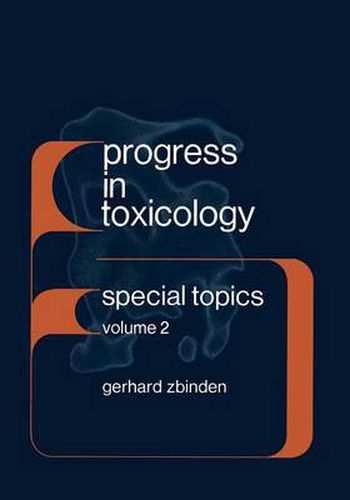Readings Newsletter
Become a Readings Member to make your shopping experience even easier.
Sign in or sign up for free!
You’re not far away from qualifying for FREE standard shipping within Australia
You’ve qualified for FREE standard shipping within Australia
The cart is loading…






This title is printed to order. This book may have been self-published. If so, we cannot guarantee the quality of the content. In the main most books will have gone through the editing process however some may not. We therefore suggest that you be aware of this before ordering this book. If in doubt check either the author or publisher’s details as we are unable to accept any returns unless they are faulty. Please contact us if you have any questions.
THE STATE OF THE ART The recent seventies have not been good times for toxicologists. Public confidence in us is shaken, mostly as a consequence of an unhappy sequence of spectacular failures: we have been surprised by a tragic transplacental carcinogenic effect of diethylstilbestrol, an old and widely prescribed synthetic estrogen. We are confronted with a small epidemic of an unusual liver tumor, angiosarcoma, induced by a simple chemical, vinylchloride, whose insiduous toxic potential we failed to recognize for years. Our clinical colleagues had to tell us about the ulcerogenic effect of as simple a substance as potassium chloride. We also just learned of an unusual toxic reaction, pseudolupus, developing in people taking a popular fixed-combination drug, venocuran Admit- tedly, we could not have predicted this syndrome, even if we had con- sidered the possibility. We are still unable (to continue this self-flagellation) to explain the relationship between the appetite suppressant arninorex and the sud- denly increased occurrence of a lung disease posing as primary pulmonary hypertension. And worse yet, we have no way to evaluate a new deriva- tive of this class, and to predict whether or not it, too, will produce the deadly condition. We still, to my knowledge, have no plausible ex- planation why and how thalidomide caused phocomelia. Of course, we do diligently a set of teratological experiments with each new drug; we follow a protocol which has the blessing of all governmental regulatory agencies.
$9.00 standard shipping within Australia
FREE standard shipping within Australia for orders over $100.00
Express & International shipping calculated at checkout
This title is printed to order. This book may have been self-published. If so, we cannot guarantee the quality of the content. In the main most books will have gone through the editing process however some may not. We therefore suggest that you be aware of this before ordering this book. If in doubt check either the author or publisher’s details as we are unable to accept any returns unless they are faulty. Please contact us if you have any questions.
THE STATE OF THE ART The recent seventies have not been good times for toxicologists. Public confidence in us is shaken, mostly as a consequence of an unhappy sequence of spectacular failures: we have been surprised by a tragic transplacental carcinogenic effect of diethylstilbestrol, an old and widely prescribed synthetic estrogen. We are confronted with a small epidemic of an unusual liver tumor, angiosarcoma, induced by a simple chemical, vinylchloride, whose insiduous toxic potential we failed to recognize for years. Our clinical colleagues had to tell us about the ulcerogenic effect of as simple a substance as potassium chloride. We also just learned of an unusual toxic reaction, pseudolupus, developing in people taking a popular fixed-combination drug, venocuran Admit- tedly, we could not have predicted this syndrome, even if we had con- sidered the possibility. We are still unable (to continue this self-flagellation) to explain the relationship between the appetite suppressant arninorex and the sud- denly increased occurrence of a lung disease posing as primary pulmonary hypertension. And worse yet, we have no way to evaluate a new deriva- tive of this class, and to predict whether or not it, too, will produce the deadly condition. We still, to my knowledge, have no plausible ex- planation why and how thalidomide caused phocomelia. Of course, we do diligently a set of teratological experiments with each new drug; we follow a protocol which has the blessing of all governmental regulatory agencies.